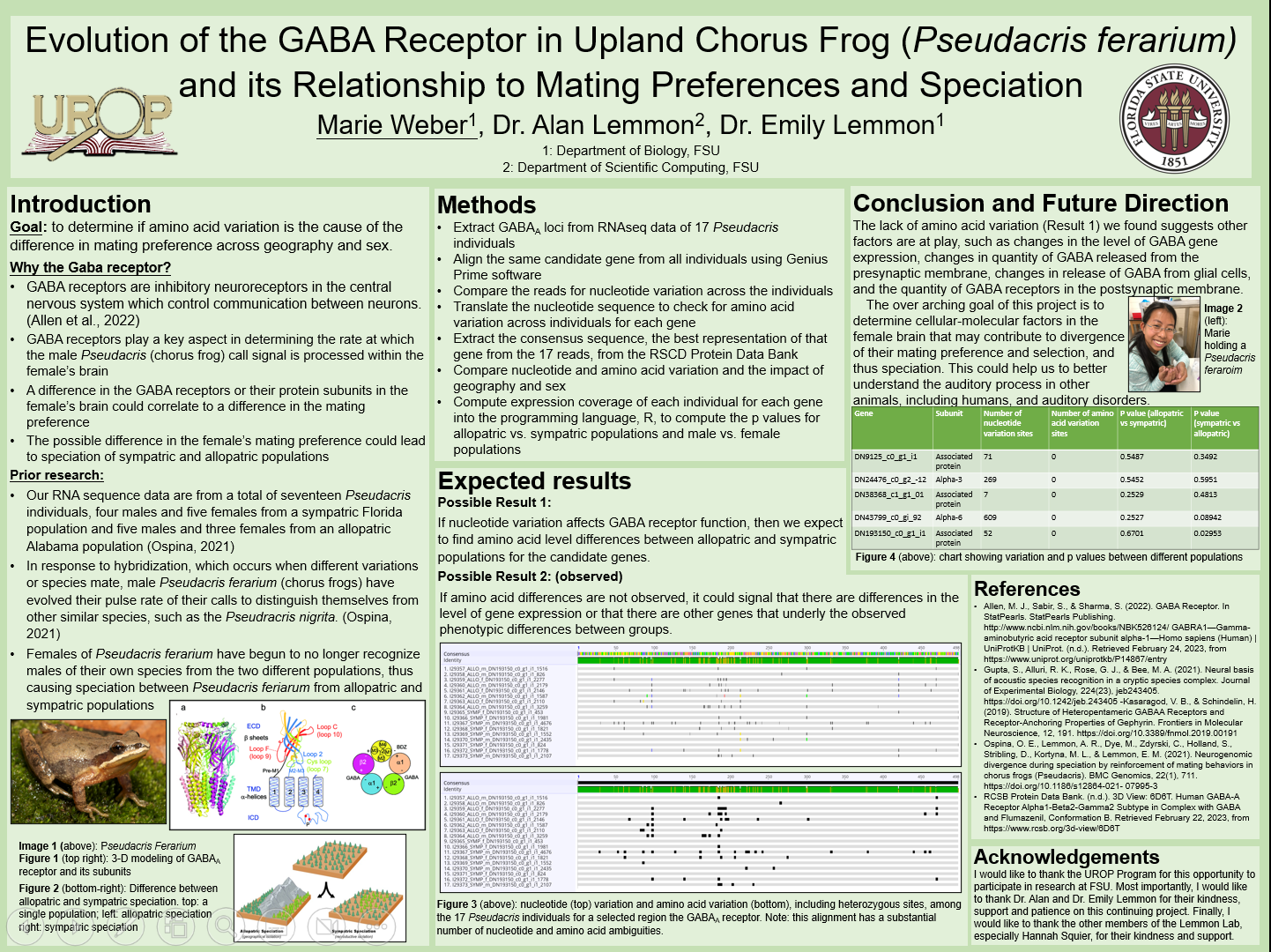Research Symposium
24th annual Undergraduate Research Symposium, April 3, 2024
Marie Weber Poster Session 1: 9:30 am - 10:30 am /79

BIO
My name is Marie Weber. I am a biochemistry student, class of 2027 in FSU’s honors college. I am also a presidential scholar and am engaged in leadership at SCURC. I was adopted from China at the age of one and grew up in Sarasota, FL. I am interested in research that relates to the human body, neurology, genetics, and biotechnology. I really enjoy learning about how intricate the human body is and who we can alter living organisms on the cellular level. After graduating from FSU, I plan to continue with research and graduate school or a medical career. I am passionate about being a lifelong learner and helping others. My hobbies include aerial silks, scuba diving, hiking, camping, backpacking and almost anything outdoors. I also really enjoy volunteering and serving others, especially those who are less fortunate. I am thankful for the opportunity to participate in UROP and have hands on learning experience of how a lab works in an academic environment as well as to being able to help conduct research that I am passionate about. I am also so thankful to my wonderful professors, Dr. Alan and Emily Lemmon for their kindness and support.
Evolution of the GABA Receptor in Upland Chorus Frog (Pseudacris ferarium) and its Relationship to Mating Preferences and Speciation
Authors: Marie Weber, Dr. Alan LemmonStudent Major: Biology
Mentor: Dr. Alan Lemmon
Mentor's Department: Department of Computing Mentor's College: College of Arts and Sciences Co-Presenters:
Abstract
During the process of speciation, populations diverge and become reproductively isolated from each other, leading to genetic divergence. In response to costly hybridization, male Upland chorus frogs (Pseudacris feriarum) have evolved a higher pulse rate mating call, which distinguishes them from another similar species (P. nigrita). Furthermore, female P. feriarum from sympatric populations (areas where they overlap with P. nigrita) have evolved the ability to not only discriminate between conspecific and heterospecific (P. nigrita) male calls, but also between male calls from their own versus different populations. These data suggest that P. feriarum is undergoing incipient speciation between allopatric and sympatric populations. Previous studies suggest that a shift in the balance between neural excitation and inhibition via glutamate and GABA receptors can alter how auditory neurons process pulse rate information in frog calls. Our overarching goal is to determine what cellular-molecular factors in the female brain may be contributing to divergence of their mating preferences. Specifically, we will assess whether variation in amino acid sequence of the GABA receptor is associated with mate choice differences among the two Pseudaris feriarum populations. We will translate the nucleotides of specific candidate genes in the GABA receptor to determine whether mutations at the nucleotide level result in amino acid substitutions among the 17 allopatric and sympatric, male and female frogs in this study. Evidence for amino acid differences between populations would suggest that mutations in GABA receptor genes may underlie divergence in neural processing and behavioral differences in chorus frogs.
Keywords: GABA, DNA, genes, frogs, speciation


